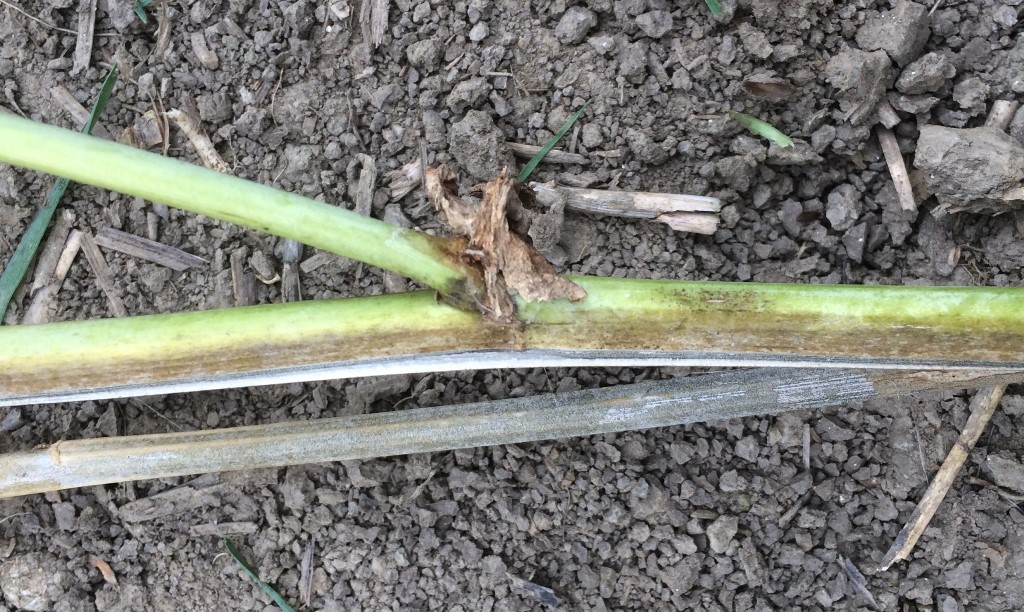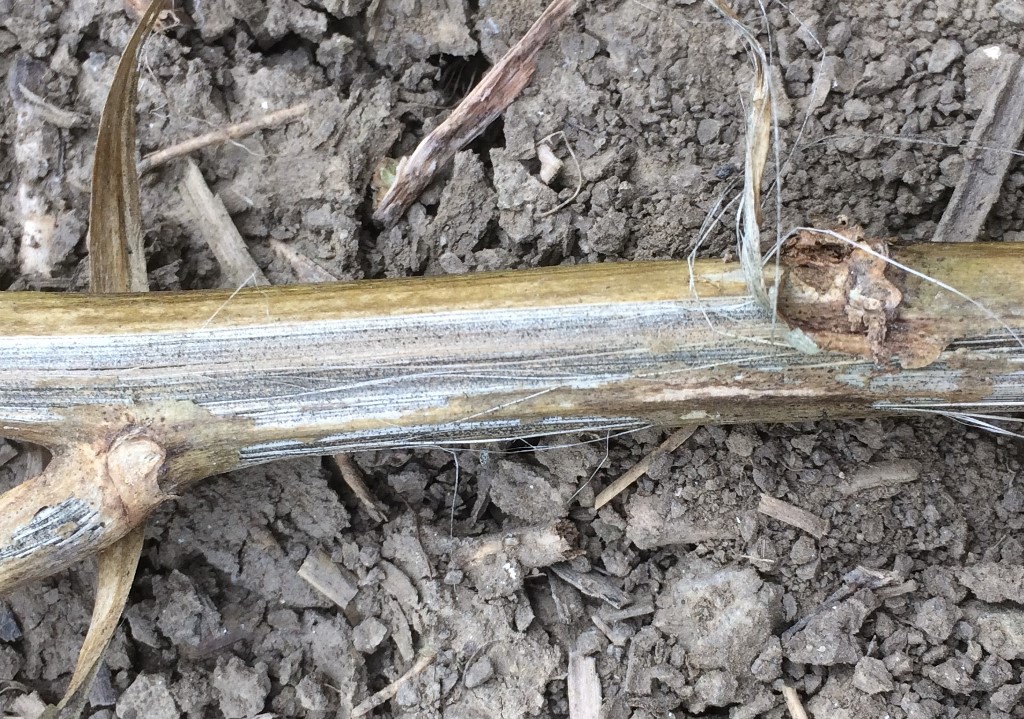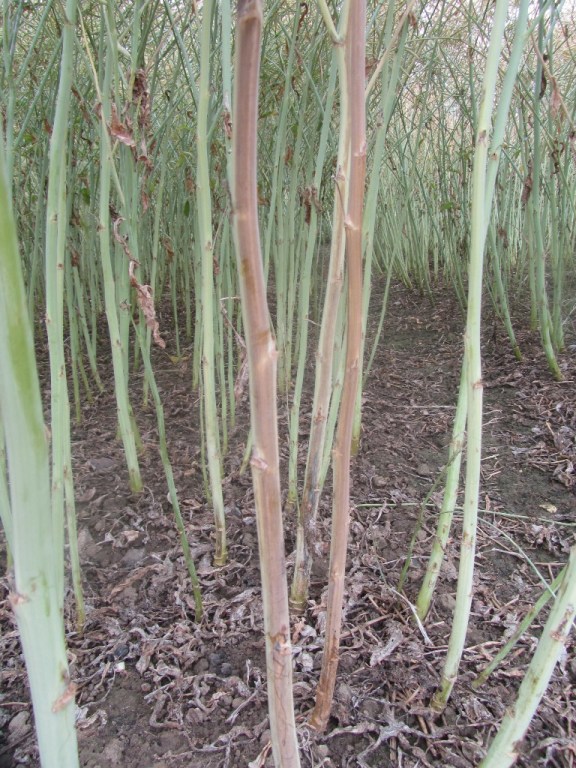Field trials indicate that it’s been a bad year for verticillium wilt and yields of some varieties may have been hit by as much as 1t/ha.
Initial results from oilseed rape trials indicate some varieties may have been hit with verticillium wilt this year.
Symptoms of the disease are not usually obvious until July and the effect on yield varies. But it can hit plants already in a weakened state harder, explains Faye Ritchie of ADAS.
“Typically you see yellow striping on plant stems which turn brown and are quite distinctive. Small microsclerotia then form, which are a source for future infection,” she says.

Principal symptoms include yellow striping on plant stems which turns brown – the branch in the background is severely affected.
“The early senescence can affect yield but we know that varieties differ in their tolerance of the disease. Farms badly affected by verticillium wilt will benefit from growing less susceptible varieties.”
This year, the effects have been particularly pronounced on some crops, she notes.
“There were more reports of verticillium wilt this year than in 2016 and we saw an earlier onset of symptoms in June”.

An OSR stem with advanced symptoms including the stem surface flaking away and microsclerotia.
It’s thought the early effects of flea beetle, followed by pressure from light leaf spot and dry conditions during the spring have put some OSR crops under pressure.
Results from field trials and pot tests carried out by ADAS this year and AHDB Recommended List trials have been published on the KWS website
In official trials at Cowlinge, Suffolk, a site considered to be heavily infested with verticillium wilt inoculum, some varieties yielded almost 1t/ha less than their mean for 2017.
An AHDB-funded project, led by NIAB with ADAS as scientific partner, is currently underway to evaluate resistance levels to verticillium wilt in UK OSR varieties.
New crop advice
As OSR establishment gets underway, there’s also advice on matching variety to drilling date, available through KWS’ CultiVent information and advice service.
This includes a handy downloadable oilseeds seed rate calculator.




